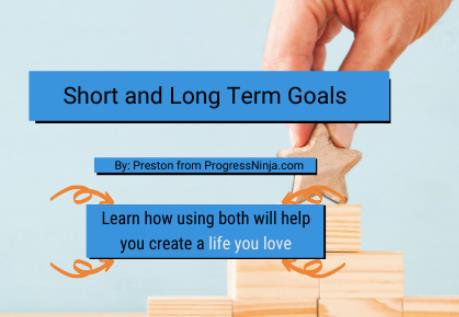Can You Give Examples of Short Term Goals and Long Term Goals?
In the strategic planning of personal and professional growth, understanding the distinction between short term and long term goals is crucial. Short term goals focus on immediate achievements, while long term goals look ahead to bigger, more transformative successes. Each type of goal serves a unique purpose, and both are necessary for sustained progress. This article explores specific examples of each, providing insight into how effectively set goals can lead to achievement and success.

Short Term Goals: Immediate Objectives
Short term goals are typically set to be achieved within a few days to up to a year. They are designed to be specific, measurable, and achievable within a short timeframe, helping individuals and organizations generate momentum and measure progress.
Professional Short Term Goals
- Increase Monthly Sales: A sales manager might set a goal to increase monthly sales by 15% within the next three months through enhanced marketing strategies and sales team training.
- Statistical Insight: Studies show that specific sales targets can increase team performance by up to 20% as they provide clear direction and motivation.
Personal Development Short Term Goals
- Fitness Challenge: An individual may aim to run a 10k race within six months, following a detailed training schedule to build stamina and speed.
- Health Data: According to fitness experts, short term fitness goals significantly increase adherence to exercise routines, with a participation increase noted as high as 40% in those with set goals.
Educational Short Term Goals
- Course Completion: A student might target completing an online course in graphic design within the next four weeks to enhance their skills for upcoming projects.
- Learning Efficiency: Research indicates that setting clear educational goals can improve learning outcomes by over 25%, as they focus efforts and resources effectively.
Long Term Goals: Visionary Aspirations
Long term goals are set with a timeframe of several years to a decade or more. They require sustained effort, broad strategic planning, and long-term commitment. These goals often involve higher stakes and significant changes or achievements.
Career Long Term Goals
- Achieve Executive Position: An individual in a mid-level management position may aim to become the CEO of their company within the next ten years, planning to gain necessary skills and experiences through successive leadership roles.
- Career Advancement: Studies suggest that individuals with clear long-term career goals are 70% more likely to achieve senior professional roles within their targeted timelines.
Personal Long Term Goals
- Financial Independence: Someone might set a goal to achieve financial independence by age 50, planning to do this through smart investments, savings, and reducing debts.
- Financial Planning Success: Financial advisors note that clients with specific long-term financial goals are more likely to achieve financial independence due to consistent and targeted financial behaviors.
Educational Long Term Goals
- Earn a Doctorate Degree: A college student may plan to earn a Ph.D. in Psychology to pursue a career in clinical research, expecting to complete this goal within the next eight years.
- Persistence Pays Off: Data from educational institutions shows that students with long-term educational aspirations are 50% more likely to complete their degrees compared to those without defined goals.
Conclusion: Balancing Short and Long Term Aspirations
The successful implementation of both short term goals and long term goals examples is essential for balanced growth and achievement. While short term goals provide immediate results and satisfaction, long term goals pave the way for achieving life-changing successes and fulfilling one's potential. By strategically aligning short-term accomplishments with long-term visions, individuals and organizations can ensure sustained progress and development.